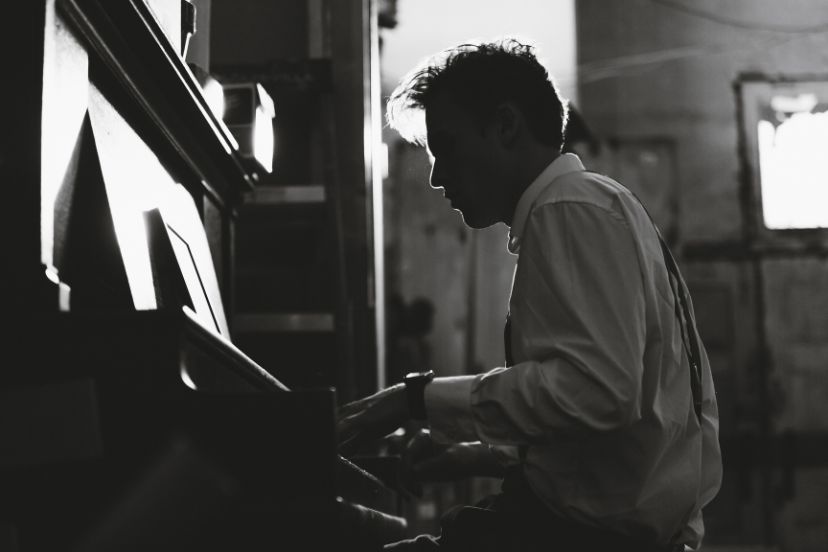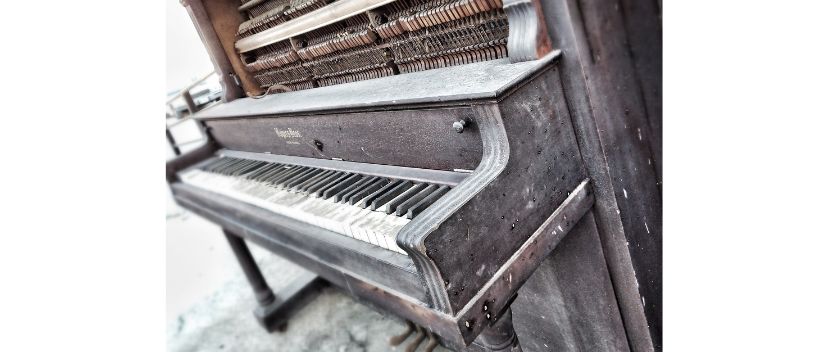For those looking to learn piano in a creative and enjoyable way, Creative Piano Academy offers…
The Honky Tonk Piano: A Unique Sound and Story

The honky tonk piano is more than just a musical instrument. It’s a piece of history, a symbol of a bygone era, and a testament to the resilience and creativity of musicians.
The genre originated in the bars and saloons of Texas and Tennessee, with San Antonio and Fort Worth being notable hotspots. This unique genre has seen its fair share of evolution, influenced by different styles like country music, rock, and jazz, and has been shaped by numerous artists, each leaving their own distinct mark on the genre.
Honky Tonk Piano Overvew
A honky tonk piano is a distinct type of piano that originated from the honky tonk bars and clubs of country music. This style of piano playing became popular in the late 19th and early 20th centuries, particularly in the South and Midwest regions of the United States. Honky tonk players were known for their lively and energetic performances, which were a blend of traditional country music, blues, and ragtime.
What sets a honky tonk piano apart from other types of pianos is the way it is played. Honky tonk artists use a percussive style of playing that involves striking the keys with force and speed. This produces a sharp, bright sound that is perfect for country music. The playing is often accompanied by a combination of chords, glissandos, and tremolos that give honky tonk music its characteristic “twangy” sound.
Listening to honky tonk music is an experience that transports the audience to another time and place. The upbeat tempo and catchy melody of songs such as “Heartaches by the Number” by Ray Price and “Jambalaya” by Hank Williams sold millions of records, making honky tonk music one of the most successful genres of the decade.
The Honky Tonk Piano Player
Honky tonk players were often the headlining act at honky tonk bars and clubs, where they would play for hours on end, sometimes without taking a break. They were known for their ability to connect with the audience and get them up and dancing.
Whether they were playing fast-paced boogie-woogie or slow, mournful ballads, honky tonk players always managed to capture the emotional essence of the song.
So there are a few key factors that make honky tonk different from other types of pianos. The percussive style of playing, the blend of styles that honky tonk music incorporates, and the emotional connection that honky tonk players establish with their audience are all hallmarks of this distinctive genre.
Whether you’re a lifelong fan or have never heard of honky tonk piano before, there’s no denying the impact that this style of music has had on the country music scene and on American culture as a whole.
Famous Honky Tonk Players
Honky tonk players are not just musicians; they are pioneers who shaped the genre. They played their pianos with a unique style, using their fingers to create distinctive sounds that are still imitated by artists today.
These artists, along with many others, helped to establish honky tonk as a unique and enduring style of music that has continued to captivate audiences to this day.
Honky Tonk Player Examples
One name that stands out in the realm of honky tonk piano is Jo Ann Castle. Known for her lively performances and quick fingers, Castle was a regular on the Lawrence Welk Show, a popular music program in America. Her stage name, ‘Queen of the Honky Tonk Piano,’ was truly fitting as she played with an energy and enthusiasm that kept audiences captivated.
Another prominent figure in the honky tonk world was Johnny Maddox, a pianist who made his mark during the post-World War II era. He was known for his left-hand playing style, which exemplified the honky tonk sound. His popularity soared when his version of “Crazy Otto Medley” sold over a million copies, making him the first honky tonk player to have a hit record.
In Nashville, the honky tonk piano was largely popularized by Frankie Carle, whose stage name was ‘Crazy Otto.’ Carle’s style was characterized by his right hand playing melodies while his left hand played bass notes. He was also known for his loud and fun playing style, which was perfect for the bar scene where honky tonk originated.
Other famous honky tonk player examples include Johnnie Johnson, who was the pianist for Chuck Berry for many years, and Joe “Fingers” Carr, who had a hit with the song “Portuguese Washerwoman” in the 1950s, and William “Smokey” Dacus.
Availability of Honky Tonk
The honky tonk style is not limited to America. Winifred Atwell, also known as the ‘Honky Tonk Queen,’ brought the genre to Canada and the UK. Her lively performances and infectious energy made her a favorite among audiences, and her albums sold in large numbers.
Despite its popularity, honky tonk music has not always been readily available to the public. In the age of vinyl records, many honky tonk albums were unavailable as CDs. However, with the rise of digital music platforms, these songs have finally found a new home.
One such honky tonk musician whose music was largely unavailable for a long time is Bob ‘Piano Man’ Jones. His music remained largely unheard until July of last decade when his songs were finally featured on digital platforms. This allowed a new generation of listeners to appreciate the honky tonk style.
The honky tonk genre is more than just a type of music. It’s a slice of history, a testament to the evolution of popular music, and a symbol of fun, resilience, and creativity. As we listen to the honky tonk, we are not just hearing notes; we are experiencing a journey through time, from the bars of Texas and Tennessee to the stages of Nashville and beyond.

FAQs About Honky Tonk Piano
What is honky tonk piano?
Honky tonk is a style of playing the piano that originated in the late 1800s and early 1900s. It typically features a fast-paced rhythm and upbeat melodies with a focus on the right hand.
What is honky tonk music?
Honky tonk music is a subgenre of country music that is characterized by its energetic and lively style. It often features honky tonk playing, but can also include other instruments like guitar, fiddle, and drums.
What is the difference between jazz and honky tonk?
While both jazz and honky tonk involve improvisation and creative playing, jazz typically features more complex harmonies and chord progressions than honky tonk.
What are some popular honky tonk songs?
Some popular honky tonk songs include “Heartaches by the Number,” “Your Cheatin’ Heart,” and “Jambalaya (On the Bayou).”
How do honky tonk players play so fast?
Honky tonk players often use a technique called “stride piano,” where the left hand alternates between playing bass notes and chords while the right hand plays fast, melodic runs.
Can anyone learn to play honky tonk?
Learning honky tonk takes time and dedication, but anyone can learn with the right resources and practice.
What is the best way to listen to honky tonk?
Many honky tonk pianists played in small honky tonk bars and saloons. To get the best listening experience, find a small, intimate venue or listen to recordings of live performances.
Is honky tonk still popular today?
While honky tonk is not as popular today as it was in the mid-20th century, it still has a strong following among country music fans and piano enthusiasts.
How did honky tonk get its name?
The term “honky tonk” originally referred to a type of bar or saloon where people would go to drink and dance. The piano players in these establishments would often play fast, energetic music that came to be known as “honky tonk piano.”
Honky Tonk Piano Summary
In conclusion, the honky tonk piano is an integral part of our musical history. From Jo Ann Castle to Johnny Maddox, from Crazy Otto to Winifred Atwell, each honky tonk player has contributed to the genre’s rich tapestry.
Their music continues to inspire and entertain, reminding us of the power of creativity and the enduring appeal of honky tonk music.
Despite the changes in popularity and the evolution of genres, the honky tonk piano remains a beloved instrument, its music a testament to the artists who played it and the audiences who loved it.
Ready to learn to play honky tonk yourself? Check out the best way to learn to play piano.



